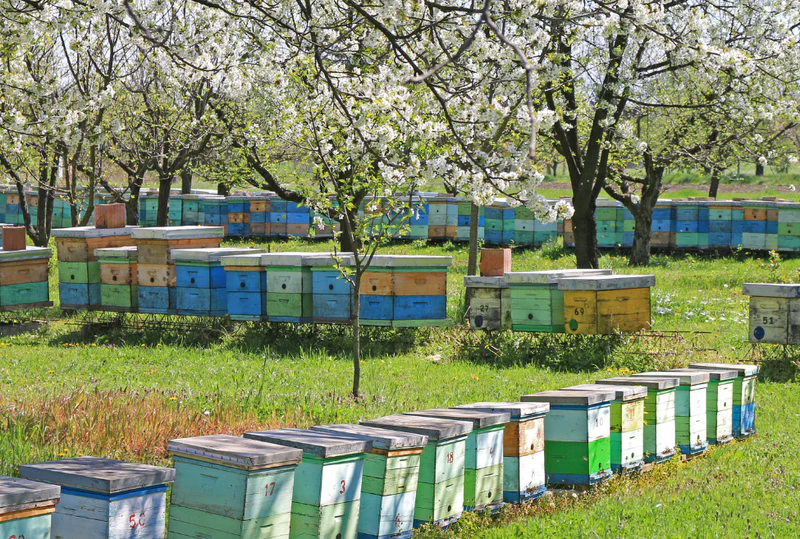
Guest Blog Introduction.
I enjoy coincidences and serendipitous moments a lot; don’t you? The longer I’m around the more I seem to have them. How is this for one of those moments! A couple of weeks ago, I received an offer of a guest blog from Usman Kahn of Oz Armour in Sydney, Australia. They are out in the Western suburbs at Granville where some of my Australian family live so I asked my nephew Iain to check them out for me.
Regular readers will remember Iain from my adventures with the wild bees in Parramatta a couple of years ago. Iain, a lecturer at the local TAFE college, is also my admin support and creator of the Halloween Listening Party. So, if you enjoy spooky stories, this is for you; https://www.halloweenlisteningparty.com/ Anyway, Iain tells me he passes the Oz Armour shop frequently on his way to catch a train from Clyde Station. His father Brian used to work for a railway company making upholstery for carriages across the road from the bee supply shop. I’ve passed through Clyde myself lots of times on the train into Sydney back in the day when Olivia Newton-John and Abba were top of the charts.
Iain says he always meant to take photographs of the shop for me but never got round to it. However, now he will visit the store and get me a couple of things. One of my sisters is visiting Granville next spring from Scotland. She doesn’t know it yet, but Christobel will bring back a net/s for covering hives for transporting. I could have done with one recently when taking bees down to Keith. Quite a few bees were under the open mesh floor, unbeknown to me, till they moved onto to the back window!
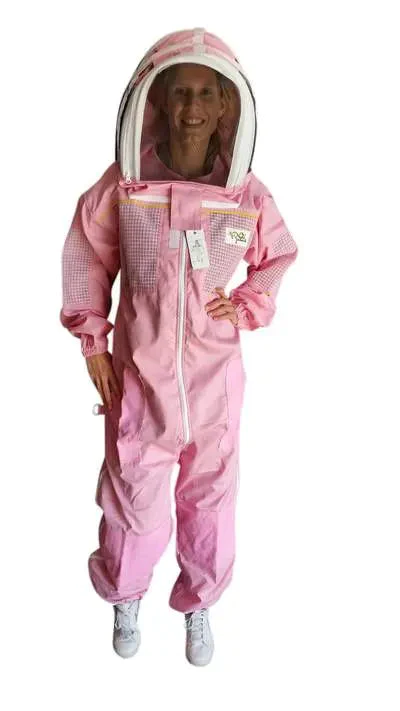
I like that the products are made in Australia and I might even succumb to the pink ventilated bee suit which is a good price at £105. As if I need another bee suit, but then I am the Imelda Marcos of beekeeping! I have more bee suits than summer dresses, or pairs of shoes, but then I spend most of the season in the them.
Australian-Made Products.

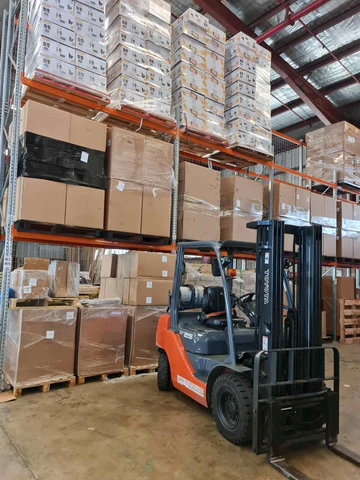
Founded in 2016 in the thriving heart of Granville, Australia, OZ Armour has solidified its position as a prominent provider of premium beekeeping gear. The brainchild of a passionate group of seasoned beekeepers, our journey began with a shared vision to ensure the safety and comfort of beekeepers globally, nurturing the critical role bees play in our ecosystem.
With meticulous precision and a commitment to excellence, our range of superior beekeeping suits and equipment are carefully crafted within our Granville facility, using the finest heavy-duty fabric. Our products are designed to be highly durable and breathable, making them ideal for even the most challenging beekeeping conditions.
As a socially responsible brand, OZ Armour remains deeply committed to giving back to the community. We contribute to the education of underprivileged children through our initiatives to create a sustainable future for future generations. We are committed to supporting the growth of our community, not just through our products but also by promoting a harmonious relationship with nature.
Join us at OZ Armour in our mission to protect and support the indispensable work of beekeepers, preserving the delicate balance of our environment and ensuring the well-being of our global ecosystem.
Blogger Introduction.
Usman, company manager,asked beekeeper, Faruukh, to write about the queen bee in Australian beekeeping for us this week. Thank you, Usman and Faruukh, for sharing a bit of Australia with us.
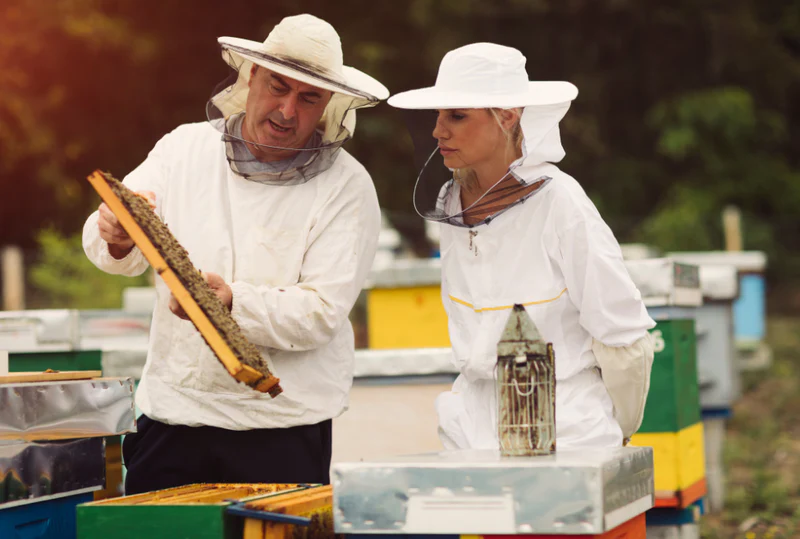
Farrukh is a seasoned beekeeper with over a decade of hands-on experience nurturing colonies in various regions of Australia. Farrukh began beekeeping to promote sustainable practices in agriculture and preserve the balance of nature.
With a Bachelor’s degree in Environmental Science, Farrukh possesses a profound understanding of the intricate dynamics within beekeeping ecosystems, and he has a keen eye for sustainable beekeeping methodologies. As a dedicated writer and advocate for environmental stewardship, Farrukh has contributed extensively to various publications, offering valuable insights into the world of beekeeping and its crucial role in preserving biodiversity.
Farrukh endeavors to inspire others to join the mission of safeguarding bees and fostering a harmonious coexistence with nature through its expertise and commitment to sustainable practices.
The Queen Bee.
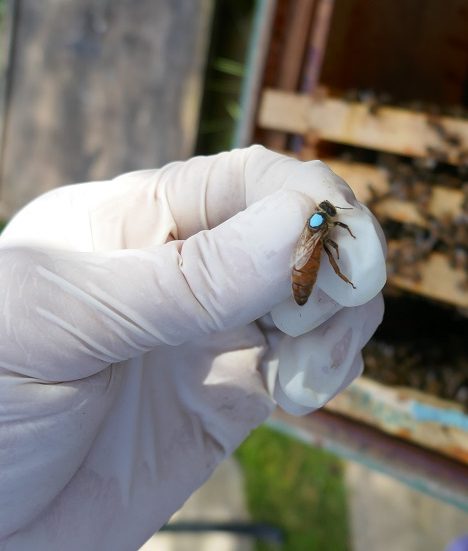
Are you looking to learn more about the complicated world of beekeeping in Australia and the Queen Bee’s important role? Have you ever wondered how this small insect influences the colonies that support our ecosystems? If you are looking for a guide, then this is the right one for you. Explore the fascinating world of Australian beekeeping with us. We will learn about how to manage beehives, understand the behavior of queen bees, and appreciate the important role bees play in our agriculture and environment. Explore the fascinating relationship between the queen bee’s important role and the delicate balance that supports the flourishing world of Australian beekeeping.
Understanding Queen Bee Dynamics
The queen bee is very important in the life cycle of the colony. Her main role is to lay eggs. The main importance of her biology is that she helps the colony grow and survive by producing worker bees and drones through continuous reproduction. She uses complex pheromonal communication to affect the behavior and productivity of the worker bees, which helps maintain the stability and functioning of the colony.
Clarifying the Misconception of the Queen as the Matriarch
Contrary to what is commonly believed, the queen bee does not hold the role of a traditional matriarch. She primarily has a reproductive part instead of a leadership position, which is different from the complex social structure that governs the colony. Although her presence is crucial for the colony’s survival, she does not have any influence on the governance or decision-making in the bee community.
Queen’s Critical Function in the Colony’s Survival
The survival of a bee colony depends on the queen bee’s important role in maintaining a strong and sustainable population. The queen bee’s ability to lay many eggs is important for the colony. It helps to have enough worker bees for tasks like finding food, taking care of the young bees, and keeping the hive in good condition.
The bee colony relies on its ability to reproduce efficiently for its long-term survival and productivity. She plays a crucial role in sustaining the bee community. It is important to understand the queen’s part in order to effectively manage the colony and ensure its long-term health and productivity.
Australian Beekeeping Practices
Beekeeping in Australia has a long and interesting history. It combines both traditional techniques and modern advancements to address the specific challenges and opportunities found in the country’s diverse landscapes and ecosystems. Studying the changes in beekeeping practices in Australia helps us understand the significance of keeping a healthy queen bee.
Traditional Beekeeping Methods in Australia
Beekeeping in Australia has been practiced since the early days of European settlement. The European honey bee (Apis mellifera) colonies were brought to the continent in the 1820s. Beekeepers then started using the established European methods. Beekeepers use various methods to manage bee colonies, such as wooden hives, frame systems, and techniques like smoking and brushing.
Beekeepers in Australia also started collecting honey, beeswax, and other products from beehives. The eucalyptus tree, which is part of the native flora, has had a big impact on honey production. This has resulted in the creation of special and excellent eucalyptus honey types. Migratory beekeeping is a common practice where beekeepers follow the flowering seasons across the continent to produce more honey.
Modern Advancements and Technologies in Beekeeping
Australian beekeeping has made significant advancements in recent decades. Beekeepers use modern technologies and management practices to improve productivity and keep their hives healthy. Some innovations in beekeeping include the use of plastic hives, monitoring systems for hives, and the adoption of integrated pest management techniques. Beekeepers can now use precision agriculture practices and GPS technology to place their hives strategically. This is done by considering the blooming periods of specific floral resources.
In addition, the use of molecular techniques in bee breeding programs has allowed the creation of queen bees that have improved traits, like being more resistant to diseases and being more productive. Genetic advancements are important for maintaining the health and productivity of the queen bee, which is crucial for the colony’s reproduction.
Importance of Maintaining a Healthy Queen in Australian Beekeeping
In Australian beekeeping, the queen bee’s health and well-being are crucial for the colony’s overall success. Having a healthy queen bee that can lay a lot of eggs is very important for keeping a strong population of worker bees. This is necessary for making honey and taking care of the hive. This is especially important in Australia because it has a unique environment with different climate conditions and a wide variety of plants.
In addition, it is important to keep a healthy queen bee in order to help the colony fight against pests and diseases like Varroa destructor. These challenges can greatly affect the colony, so having a strong queen is crucial. To protect Australian beekeeping from external threats, it has become essential to introduce disease-resistant queen beelines and practice vigilant hive management.
Implications of Queen Bee Management
Proper management of queen bees is crucial for the productivity and stability of the entire bee colony. It is important to understand the impact of queen bee management in order to keep a healthy and well-functioning bee population.
Impact of Queen Health on Colony Productivity
The queen bee’s health greatly affects the productivity of the entire colony. A strong and healthy queen bee is important for the colony because it helps to produce enough worker bees. This is crucial for tasks like gathering food, making honey, and keeping the hive running smoothly. If the queen bee is not in good health, it can result in fewer worker bees, which can lower productivity and honey production. This can ultimately put the survival of the colony at risk.
Strategies for Ensuring the Queen’s Reproductive Success
Beekeepers use different strategies to help the queen bee reproduce successfully. Some important factors for beekeepers to consider are ensuring bees have a healthy diet, creating a suitable living environment for them, and selectively breeding bees to improve desirable traits. Beekeepers can ensure the health and growth of a colony by regularly monitoring the queen’s egg-laying patterns and overall health. This helps them identify and address any problems quickly, allowing the queen to reproduce effectively and maintain the stability of the colony.
Maintaining a Balanced Bee Population
Properly managing the queen is important for maintaining a healthy bee population in the colony. It is important to have the right balance of worker bees, drones, and a healthy queen in order to keep the hive running smoothly and ensure its long-term survival.
Beekeepers can create a balanced and productive colony by managing the queen’s reproduction and controlling the population. This helps the bees to forage, pollinate, and produce honey efficiently. Managing queens effectively is crucial for maintaining a strong and healthy bee population that can adapt to environmental changes and challenges.
